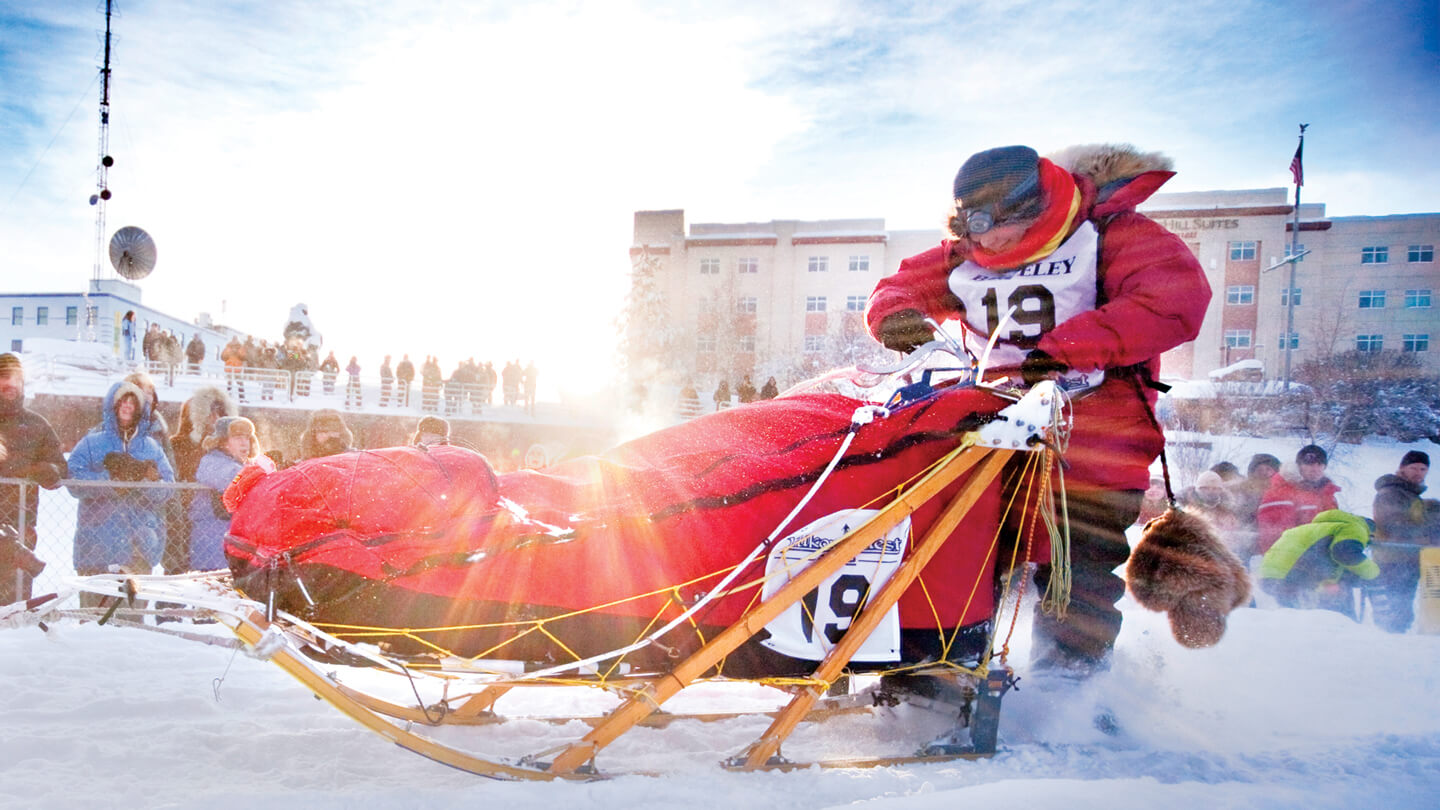The landscape glows orange and blue in the morning light, every exhaled breath a smoke signal lifting into the sky. Trucks park in a semicircle on the banks of the Chena River in Fairbanks, Alaska, the bed of each covered by a stout box with its sides punctured by portholes the size of dinner plates. A wet, leathery nose and pair of bright eyes dart around behind each opening.
Twenty-three mushers, all of them puffed up to double their size by insulated layers, haul their dog sleds off the tops of their trucks and stuff their sled bags with the supplies they hope will carry them safely through the 1,000 wild and lonely miles of the Yukon Quest. They pop open the doors of the dog boxes and hoist their wriggling racing partners to the ground, then loop harnesses over their heads and shoulders and slip protective booties on their paws. Two by two, the dogs — up to 14 per team — are clipped into position along the gang lines stretching from the front of each sled, the barking, yelping, keening frenzy sounding like a choir of microphoned seagulls.
Every three minutes, another musher pulls into the start chute — eight women and 15 men in all, ranging in age (23 to 62) and experience. Among them is 44-year-old Hugh Neff of Tok, Alaska, about to embark on his 20th 1,000-mile (1,600-km) journey with several near-misses behind him but no victories. Last year, a tragedy on the trail broke his heart; this time, he’s sure, it is finally his year to win. Meanwhile, 30-year-old Brian Wilmshurst, a Quest rookie from Dawson City, Yukon, arrives at the start line churning with nerves — after a history of “gong show” starts in shorter races, he’s anxious to look like a pro.













